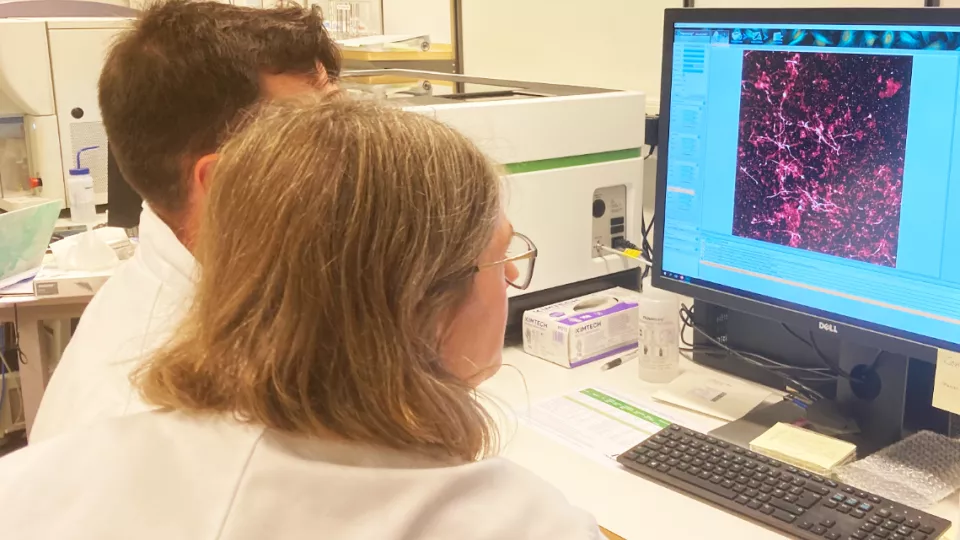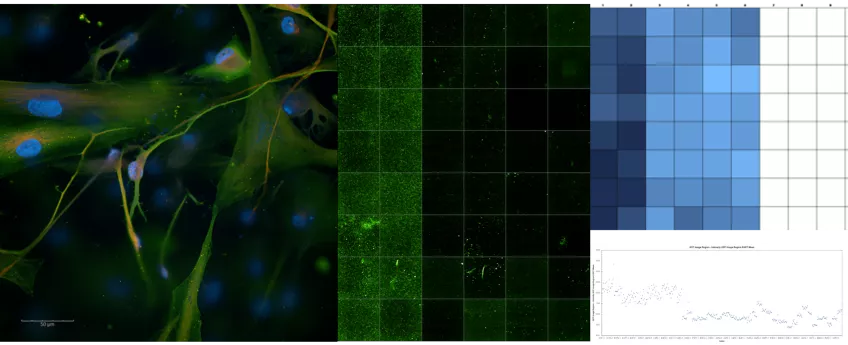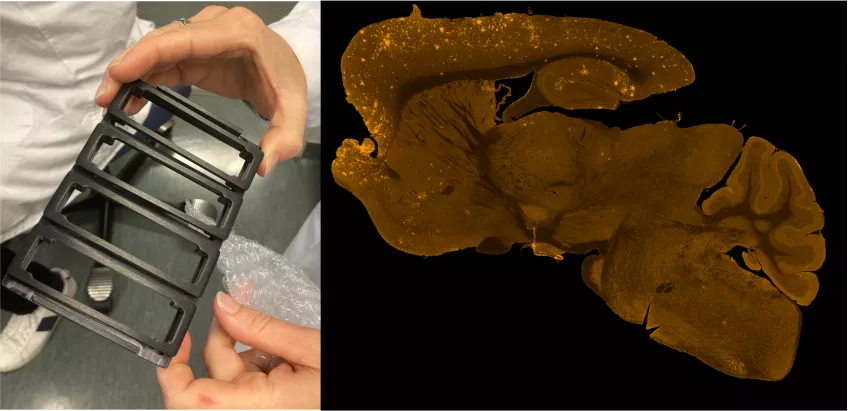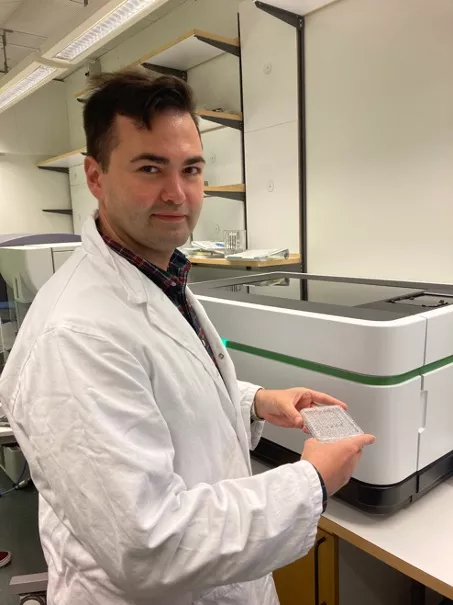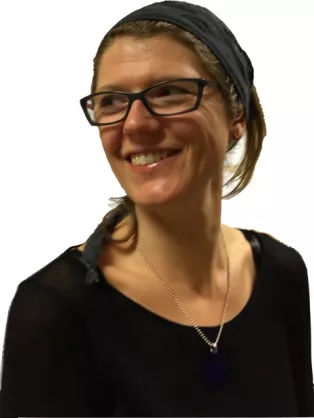In March, MultiPark received the new Operetta CLS instrument, upgrading the former Cellomics, for high content screening and analysis. Anna Hammarberg is in charge of the platform. With her expertise and long experience in cell sorting, imaging, and analysis, she can offer practical support to MultiPark researchers that wish to use the equipment but do not yet have knowledge in how to use it. Already in April, when Perkin Elmer held an online training, the interest was substantial. During a visit to the platform, Anna demonstrated the instrument and told more about its potential. Her excitation about the opportunities with the new machine is obvious.
it provides the researcher with quantitative and reliable data so that they no longer have to rely on subjective manual counting.
“The most valuable with this system, is that it provides the researcher with quantitative and reliable data so that they no longer have to rely on subjective manual counting,” explains Anna Hammarberg.
With the help of machine learning, the software can correctly distinguish different structures and cells from the background. It also helps to define the lowest quantity of images you need to get a reliable analysis. While it was longtime desirable to keep a maximum stock of images, experts nowadays have realized the logistic and sustainability-related problems that come with handling unreasonable amounts of images. Hence, the software’s smart cutoff in selecting the minimum of images to keep for robust analysis, is welcomed to avoid the waste of oversampling.
The machine and software are optimized to read cell culture plates of different sizes, but with an insert it is also possible to analyze tissue samples, sliced and mounted on traditional slides for microscopy. Still, since tissue samples tend to vary more, the user may have to adjust more settings in the software manually between samples, compared to cell culture, where the settings usually are the same between experiments.
“Since the exact application and need for hands on-support varies between researchers, I offer personalized training and guidance during regular office hours, depending on the need. At the moment, this machine is also new to me, so during this initial phase, I will have to discover the functions together with the researchers. We have the advantage to have access to active support from application specialists at Perkin Elmer during this learning process.” says Anna. She also hints for those who are interested to contact her at least a week in advance since she is already helping several of MultiPark’s research groups. But she is eager to explore the full potential of the Operetta together with new researchers. To give some inspiration to which research questions the platform may be useful to answer, we listed a few of them below.


